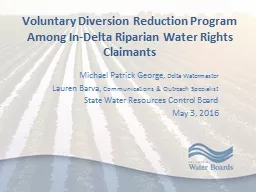PPT-The DELTA
Author : stefany-barnette | Published Date : 2017-10-02
2 Study Summary of Methodology and Results Quantifying Effect Sizes William Sones Tuesday 16 th May 2017 PSI 2017 Conference The Grange Tower Bridge Hotel London
Presentation Embed Code
Download Presentation
Download Presentation The PPT/PDF document "The DELTA" is the property of its rightful owner. Permission is granted to download and print the materials on this website for personal, non-commercial use only, and to display it on your personal computer provided you do not modify the materials and that you retain all copyright notices contained in the materials. By downloading content from our website, you accept the terms of this agreement.
The DELTA: Transcript
Download Rules Of Document
"The DELTA"The content belongs to its owner. You may download and print it for personal use, without modification, and keep all copyright notices. By downloading, you agree to these terms.
Related Documents














